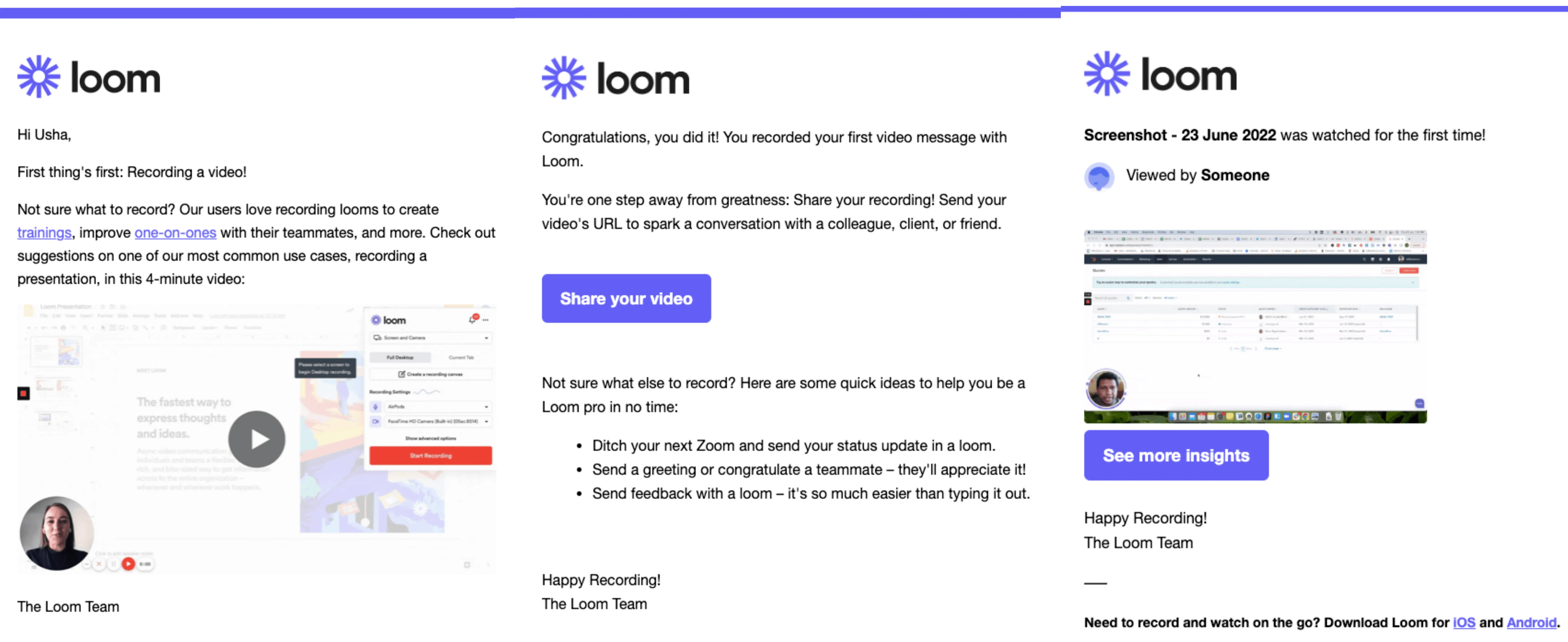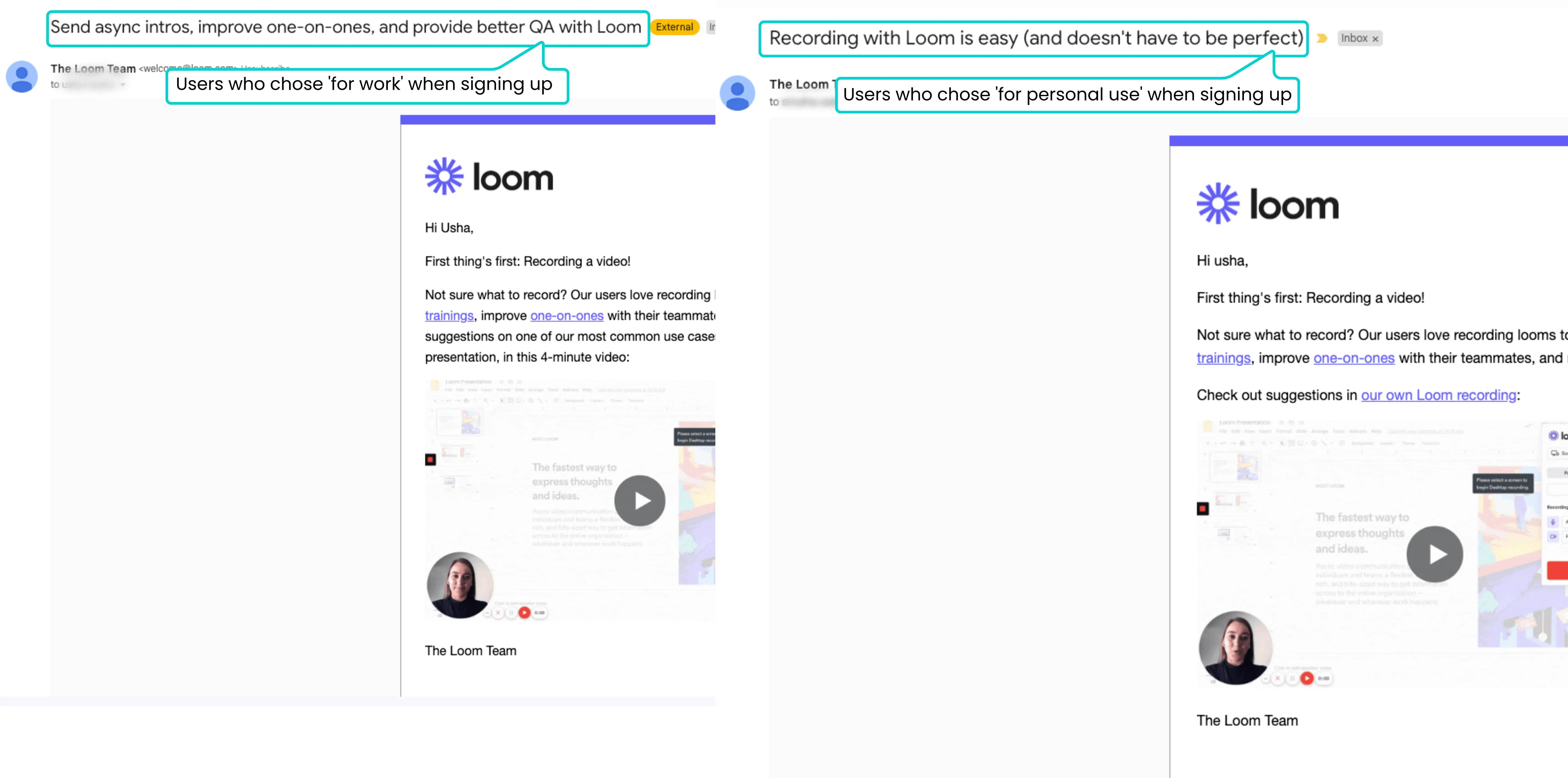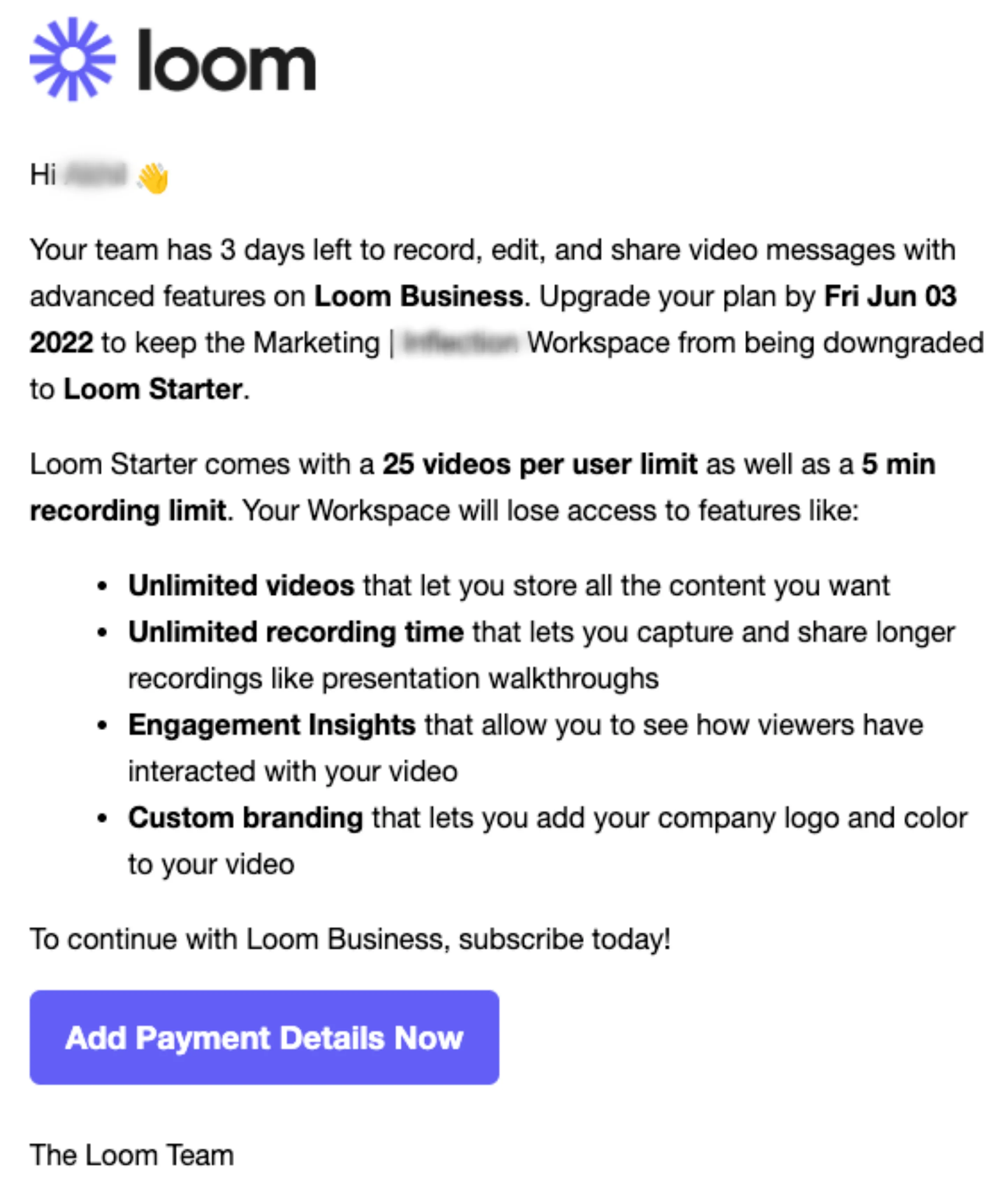The Secret To Making World-Class Product-Led Growth (PLG) Onboarding Emails

User onboarding matters.
Onboarding sets the stage for the overall product experience. You may not get another chance to showcase your product’s value to the user. A formidable first impression also means the user trusts your product a bit more.
Studies show that a positive onboarding experience means users show a higher willingness to pay ranging between 12% - 21% whereas a negative experience drops it as low as 3%.

And, value-based onboarding experience can drive the willingness to pay as high as 27%.

The positive experience trickles down to better product engagement, retention, higher customer lifetime value (LTV), positive product feedback, and overall business growth.
On the other hand, a poor onboarding experience makes it much more difficult to re-engage the customer. This often leads to negative word of mouth about the product. The poor experience can easily snowball into disengagement, churn, and retractive feedback.
Why Onboarding Emails?
You are sold on the importance of a good onboarding strategy.
So, you and your team designed the world’s most intuitive and frictionless onboarding process known to humans. There is a chance that you are still seeing a good percentage of your users abandon your product during onboarding.
In an ideal world, the best product and user onboarding experience should be enough to get you the sign-ups and conversions you dreamed of.
But in the real world, you still need a friendly reminder to get the users back on track. Yes, I am talking about onboarding emails.
Wes Bush’s bowling alley framework describes onboarding emails as conversational bumpers in a product-led growth strategy that help bring back sidetracked users back to the straight path to the desired outcome. So true!
Just like the onboarding experience differs from product to product, there can be a variety of onboarding emails. Depending on where the user is in the onboarding process, length of the trial period, and usage limitations in the freemium model, you can craft them to complement the onboarding experience.
Popular Onboarding Emails
Let’s look at some of the most common and effective onboarding emails.
Welcome Email
A welcome email is the first communication you send after a user signs up. And yes, they should be MANDATORY.
Why?
Because
- Who doesn’t like a warm welcome?
- Welcome emails get the highest open rates. That gives you the best opportunity to drive activation.
- You can start building a human connection with a new user.
The goal of a welcome email can differ. Here are some examples.
Heap takes their new users straight into the product with a clear first goal set.
Speaking of clarity, Slack does an amazing job of informing the new user why they got the email in the subject line and encourages setting up the new workspace in easy steps.

Helpful Resources
Even though many welcome emails come with How to start with [product] steps, emails with detailed and relevant resources usually follow a welcome email.
Be it usage tips, starting up guides, redirecting to in-app support, or sharing a help document, these emails play a valuable role in moving your new users to the next step on their golden path.
You may have a generic beginner’s guide but curating the resources has to be done with the common friction points in mind. Talk to your early adopters to gather a list of FAQs you can answer easily with this email or a series of emails with useful tips.
The goals of a resource email can also vary. Educating the user, logging in and trying out a basic feature, uploading real data, setting up a meeting with the CS manager, and so on. It entirely depends on the product, its learning curve, trial length, and the business goals.
For example, Notion sends emails with how-to videos to help users get familiar with the product for different use cases. These help new users adopt the product quickly. Some of the best practices also include encouraging users to try more than basic features like Fastly and consider adding a human touch to the learning experience.

Reminders
Reminder emails can be about the expiring trial, finishing the first task using your product, or re-engaging after a period of inactivity during the trial. The number of reminders and the content of the email are decided based on the length of the trial period, PLG strategy, product activity, and so on.
Here’s how some of the top PLG companies are setting up conversational bumpers for their users with reminder emails.

Buffer reminds new users to connect their social media handles to their product. Duolingo sends a get back on track email to re-engage users. Smartsheet does more than sending a trial expiration warning. They create FOMO by explaining the privileges lost due to a downgrade.
What Makes A Good PLG Onboarding Email?
The above emails are some examples of good product-led onboarding email campaigns. Some best practices you can get inspired from these emails are
- A clear subject line.
- One goal for each email.
- A human From address.
- Relevance to the user’s progress in the product.
- First milestone or a quick win celebration.
Apart from analyzing, optimizing, and experimenting, product-led companies should include onboarding emails in the feedback loop to perfect the entire onboarding experience.
What Makes A Great PLG Onboarding Email?
Are all onboarding emails impactful?
As mentioned in the previous sections, the content, type, and frequency of onboarding emails have to be relevant to your product and business goals. You need to align your team and the stakeholders about the outcomes of each email and the whole campaign before even designing the email sequence.
Here is the number one tip you need to design a kick-ass onboarding email campaign that gets results.
Ready for it?
Personalization!
The top factor that distinguishes a great onboarding email from others irrespective of all the aforementioned conditions is and always has been personalization. Even in the inbound and outbound eras, personalization played an important role in deciding which companies emerged as clear winners.
In PLG companies personalization is multi-faceted. There’s personalization based on CRM data like web activity, social interactions, sales touch points, etc. and there is personalization based on product activity events. A mix of these two is more relevant to the customer in the end-user era.
Loom is a great case study of personalized PLG onboarding emails. Take a look for yourself.
Loom personalizes the first email users receive based on the option to join an existing workspace, create a new workspace, or use the product for a personal project. The personal project users do not receive the first email shown below.

The next onboarding emails share tips on how to record your first video, celebrate the first milestone and nudge the user to share it with the world, and show insights about the views in the next email. The user’s product activity triggers the relevant emails.

Loom personalizes the subject line too based on what the user signed up for.

As the users get close to the trial end date, Loom sends timely reminders with an easy link to add the payment details. Converted users go on a different track from here.

Even if the user doesn’t end up purchasing the paid plan, Loom checks with the users with an offer of additional storage for getting more teammates onboard. A chance for Loom to expand their user base and establish relationships for team and enterprise deals.

Each email is tailored to talk to the user 1:1 with the product and firmographic data. Amazing, right?
I know what you are thinking right now. How do I do something like this at my PLG company?
One sure way to pull off personalization at scale in product-led growth companies is with Inflection.
We combine product activity and CRM data to help PLG teams drive revenue, product engagement, and speed up onboarding. All this at scale for the exploding volume of users in a PLG company and without the dependency on data or engineering. Get started here to watch Inflection in action.
No matter how elaborate or simple your product onboarding is designed to be, personalization is the (not so) secret sauce that enables you to talk directly to your users about their specific needs.
Personalized PLG onboarding emails that really speak to the customer or user and get them back on track to complete the onboarding process, initiate product engagement, and hit a home run with a conversion.

%201.webp)





